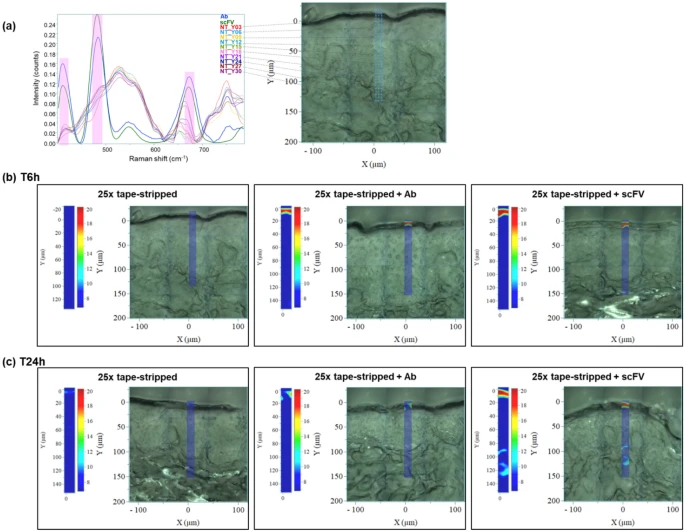- Short Report
- Open Access
Allergy, Asthma & Clinical Immunology 17, Article number: 73 (2021)
Abstract: Currently, several biologics are used for the treatment of cutaneous pathologies such as atopic dermatitis (AD), psoriasis or skin cancers. The main administration routes are subcutaneous and intravenous injections. However, little is known about antibody penetration through the skin. The aim was to study the transcutaneous penetration of a reduced-size antibody as a single-chain variable fragment (scFv) compared to a whole antibody (Ab) and to determine its capacity to neutralize an inflammatory cytokine involved in AD such as human interleukin-4 (hIL-4). Transcutaneous penetration was evaluated by ex vivo studies on tape-stripped pig ear skin. ScFv and Ab visualization through the skin was measured by Raman microspectroscopy. In addition, hIL-4 neutralization was studied in vitro using HEK-Blue™ IL-4/IL-13 cells and normal human keratinocytes (NHKs). After 24 h of application, analysis by Raman microspectroscopy showed that scFv penetrated into the upper dermis while Ab remained on the stratum corneum. In addition, the anti-hIL4 scFv showed very efficient and dose-dependent hIL-4 neutralization. Thus, scFv penetrates through to the upper papillary dermis while Ab mostly remains on the surface, the anti-hIL4 scFv also neutralizes its target effectively suggesting its potential use as topical therapy for AD.

No comments:
Post a Comment